
St James School, Salop Street, Eve Hill, Dudley
In 1811 the Church of England established the National Society for Promoting the Education of the Poor with the aim of setting up a school near to ever parish church. There was 4 schools in Dudley and St James School in Salop St, Eve Hill was built in 1842 just 2 years after the parish church.
Hobbs & Sons Fish & Chip Shop, Hall Street, Dudley

The building housing Hobbs, Fish & Chip Shops and Morralls Menswear Shop was sited originally in Hall Street, Dudley. The building dates back to the 1700’s, however was recladded with pressed brickwork in 1889.
H Morralls Gentlemens Outfitters, Hall Street, Dudley
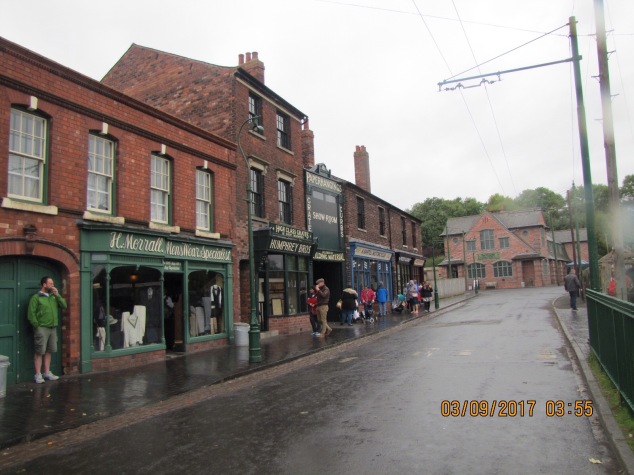
Originally next door to Hobbs, Fish & Chip Shop at 42 Hall Street, Dudley. From 1935 the shop was a tailors and Gentlemen’s outfitters ran by Archibald Victor Rogers.

4 shops formerly known as 12, 14, 16 & 18 Birmingham Street, Oldbury. In 2005, Black Country LM arranged for the transfer of the block dated around 1850 – 1875
A Hartill Motorcycles, Birmingham Street, Oldbury

in the 1930’s, Number 14 Birmingham St, Oldbury was Humphrey Bros premises, ho but use to reconstruct 1930’s motorcycles by A Hartill Motorcycles.
Humphrey Brothers Builders Merchant, Birmingham Street, Oldbury
Humphrey Bros were number 12 Birmingham St, Oldbury from 1921 until about 1960 although one time they also occupied 14 and 16. The shop display is dominated by a large fireplace surround of mottled brown, beige tiles and dark oak. The green basin and wc represents mid 30’s.
A. Preedy & Sons, Birmingham Street, Oldbury

Number 16 was occupied by two small independent tobacconists up to 1932. A Preddy & Sons was a well known wholesaler and retail tobacconists in the west Midlands, established in Dudley in 1868.
The Workers Institute, Lower Hill Street, Cradley Heath

The Cradley Heath Workers Institute stands as a monument to the struggle of the women chain makers of Cradley Heath who laid down tools in 1910 to strike for a living wage. Focusing on Britain low paid workers and establishing the principle of a minimum wage.
The Boat Dock & Boat Collection

The museum has built the boat dock on a canal branch believed to have been formed by mining subsidence in the middle of the 19th century. The branch arm formerly joined the canal arm built in 1839 to link the Limekilns with the Birmingham Canal Navigation (BCN). The second photo is inside a canal narrow boat,
The Penfold Letter Box

Letter boxes arrived on our streets in the 1850’s and the contract for making the first national standard design in 1859 was awarded to Cochrane & Co of Dudley.
Anchor Maker’s House, Lawrence Lane, Old Hill

This house is one of a pair built around 118 that used to stand on Lawrence Lance, Old Hill. The homes were condemned by the local council in the mid 1970’s. The museum dismantled the property in 1978 and rebuilt it at the museum. The property as a side entry to a back yard.
The Hardware & Ironmongers Shop
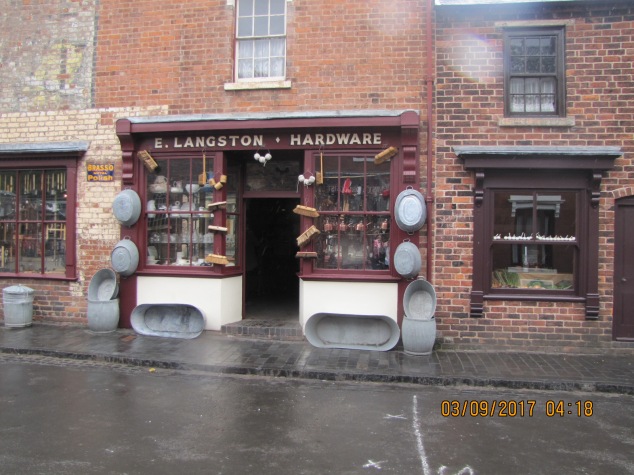
The Ironmongers shop and hardware shop occupy two properties, which formerly stood on the corner of Piper’s Row and Tower street in Wolverhampton. The shop contents have been collected to represent a typical hardware shop of the 1930@s. The stock includes a selection of household equipment – tin baths, pots and pans, tableware, lamps, laundry irons and heath equipment.
Veal’s Bakers Shop, Birmingham Street, Oldbury

The Veal’s Bakery shop was carried out at 50 Birmingham Street, Oldbury from the 1870’s. George Veal was a confectioner brought the shop in 1879 and he died in 1884. His wife remarried Arthur Smith and the properties remained in the family until the 1920’s.
Providence Chapel, Darby Hand, Near Netherton.

The Darby Hand New Connexion Methodist Chapel was originally opened on the 29th January 1837. Methodism had emerged in the mid-eighteenth century through preaching of John Wesley (1703 – 1791) who made 15 visits to Dudley and other parts of the Black Country in 1749.
The Greengrocer’s Shop

the building is a replica of two shops out of a row of 3 in Lower Lichfield Street, Willenhall before 1848. The Willenhall shops were originally built as houses and converted into front room shops in the early 1900’s. The greengrocer was owned by Gertrude Adey, wife of Willenhall Locksmiths
Museum employees dressed in period costume

Station Road Cottages, Station Road, Old Hill

The two cottages are replicas of houses which stand albeit mortified on Station Road, Old Hill near the Great Western Railway station. They were built in 1848 and formed part of the Earl of Dudley’s estates. Dwelling of that time were typically 3 rooms, a kitchen, pantry and a bedroom.
The Coal Yard, Station Road, Old Hill
This reconstruction of a Coal Yard is based on evidence collected from several Black Country coal merchants and dealers. Small yards selling coal could be found almost every neighbourhood catering for domestic consumers and small businesses such as bakeries and sweet shops etc. Most people used coal for cooking, laundering and room heating and could consume as much as two hundred weight (over 100 kg) a week.
Limelight Cinema, Harts Hill, Brierly Hill.
 The Limelight cinema is an example of a small family run cinema typical of the period 1910 -1920 although it did not open until 30 August 1921. It was owned by John Henry Revill an engineer with Cartwright & Paddock and tucked away behind a row of houses on Vine St, Harts Hill.
The Limelight cinema is an example of a small family run cinema typical of the period 1910 -1920 although it did not open until 30 August 1921. It was owned by John Henry Revill an engineer with Cartwright & Paddock and tucked away behind a row of houses on Vine St, Harts Hill.
Blacksmith’s Shop


The Blacksmith’s Shop its housed in a reconstructed building from the Great Bridge which retains the original corner fireplace. The equipment is from Eliza Tinsley Works in Old Hill.
Anchor Forge, Woods Lane, Cradley Heath

The Museum,s Anchor Forge is set in the 1920’s and preserves the equipment from the last anchor forge to operate in the Black Country. Anchor making was a prominent industry in the Black Country and anchors for some famous ships like the Great Easten, the Titanic and Royal Yacht Britannia.
Peaky Blinders Filming Location for the BBC Drama
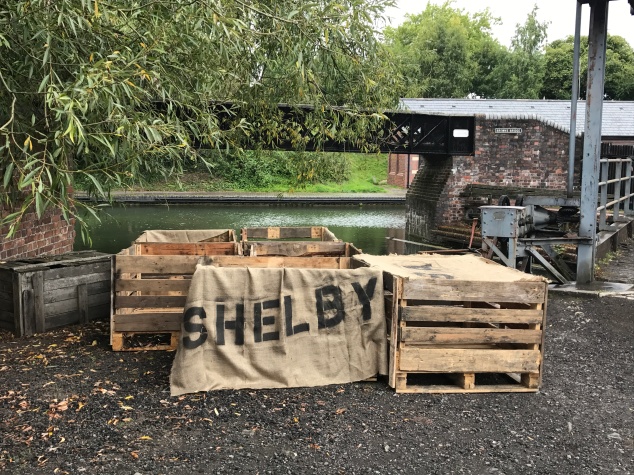



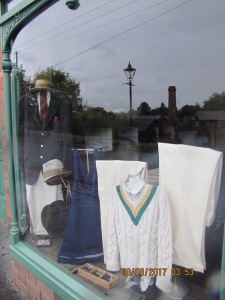
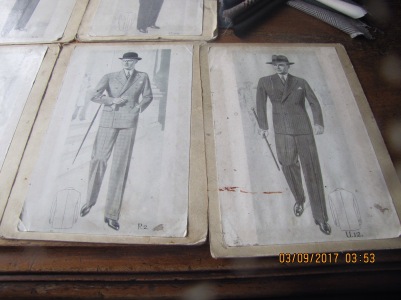






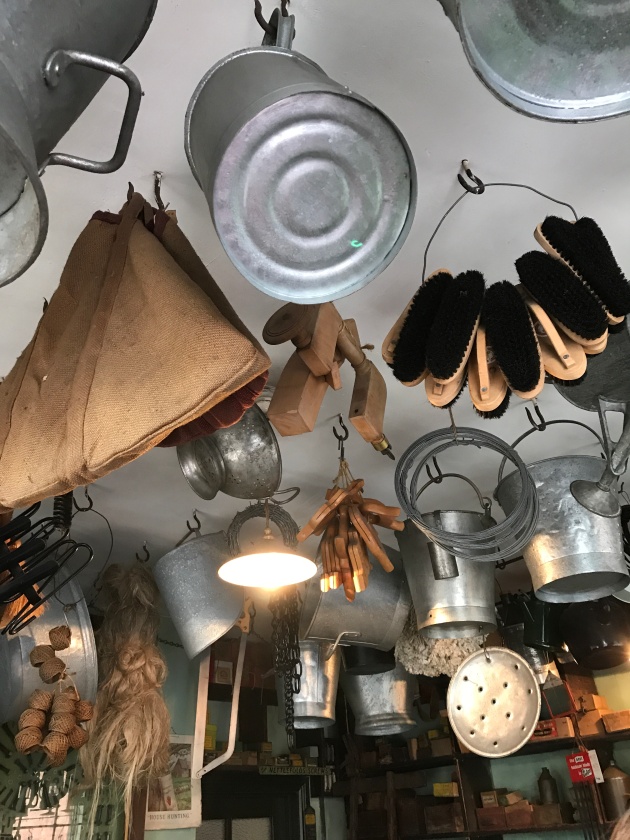

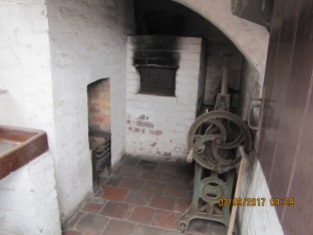



I love living museums! Thanks again for sharing this one. Considering the fact that the part of Canada where I live wasn’t settled until after 1900, I find the old buildings fascinating.
LikeLiked by 2 people
Ha ha I know. I was recently working on my husbands family tree and found a photo of his 5 or 6 x grandfather with his crew working along the bow river, Alberta in 1905. He was buried in High River and we never realise when were living in Okotoks/Calgary. X
LikeLiked by 1 person
Very cool stuff, Kat. 🙂 I love the blacksmith stuff. 🙂
LikeLiked by 1 person
Thank you Ed, I knew you would. It was amazing to see. 😀
LikeLike
Love anything like this, also when I moved down here the first time, I worked at the Nat West in Willenhall, used to drive past the old lock factories on my way in every morning😃 xx
LikeLiked by 1 person
Oh wow what a small world. X
LikeLiked by 1 person
I think that if I visited there I would never leave. Well, except for food and beer and it appears they probably have that covered also. Great post and photos, thanks!
LikeLiked by 1 person
It was amazing, food and beer was covered there too. 😀
LikeLike